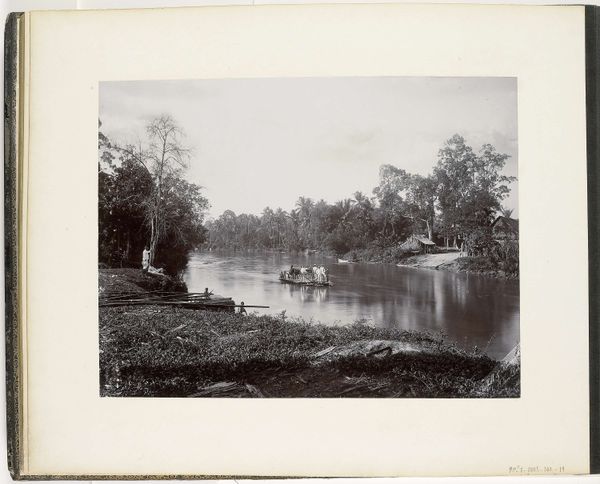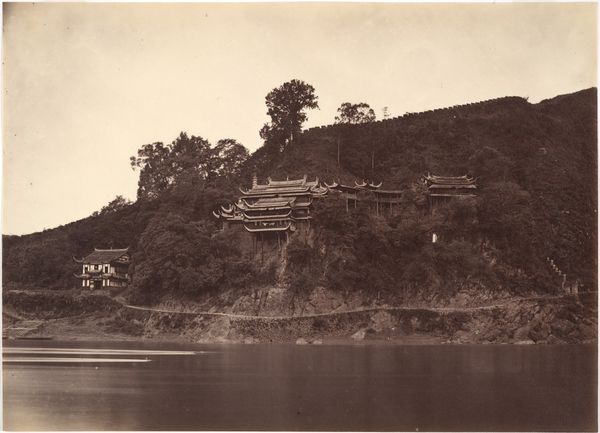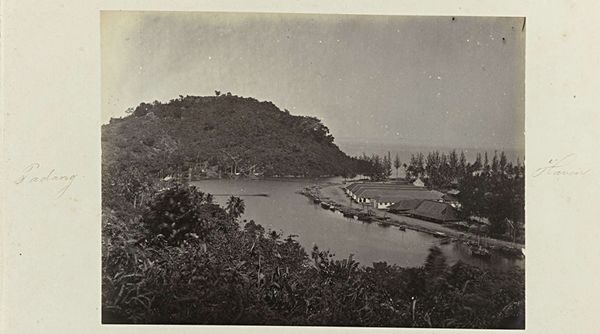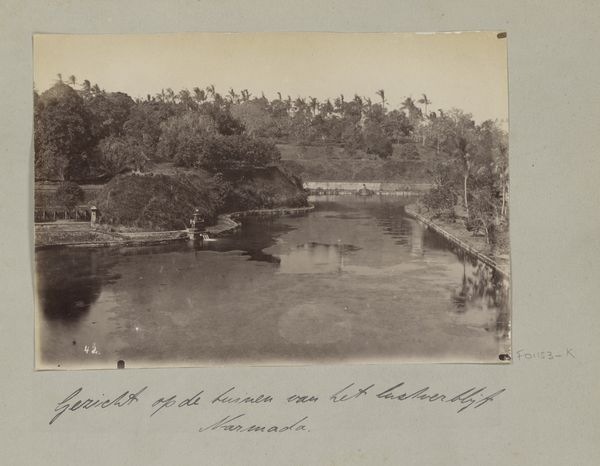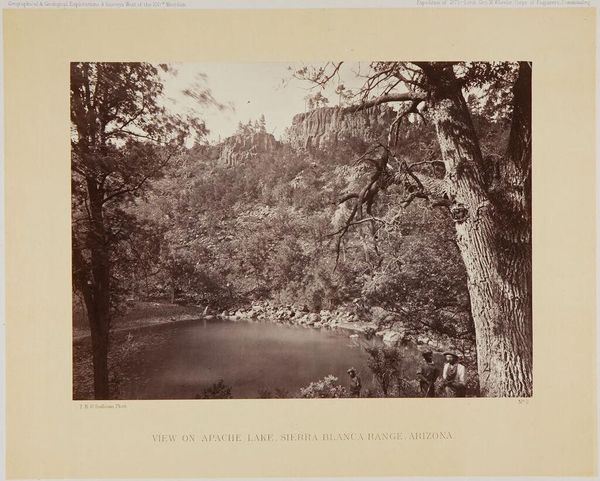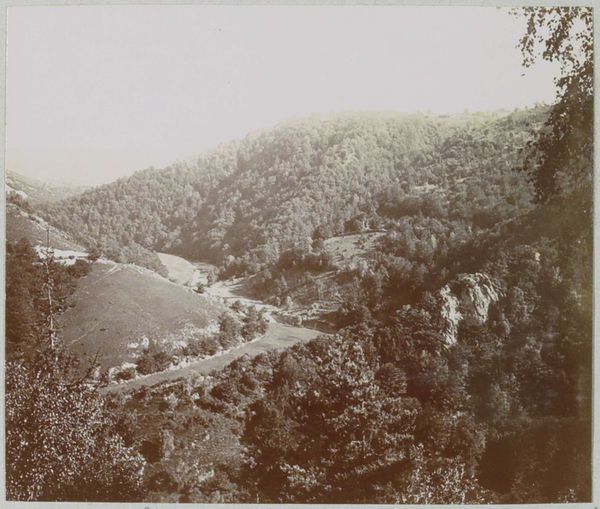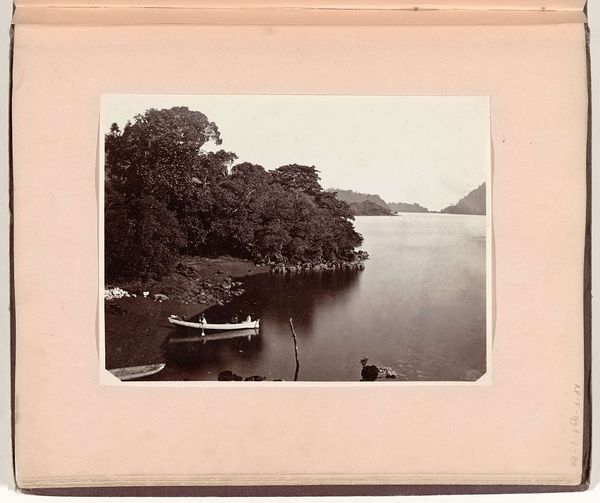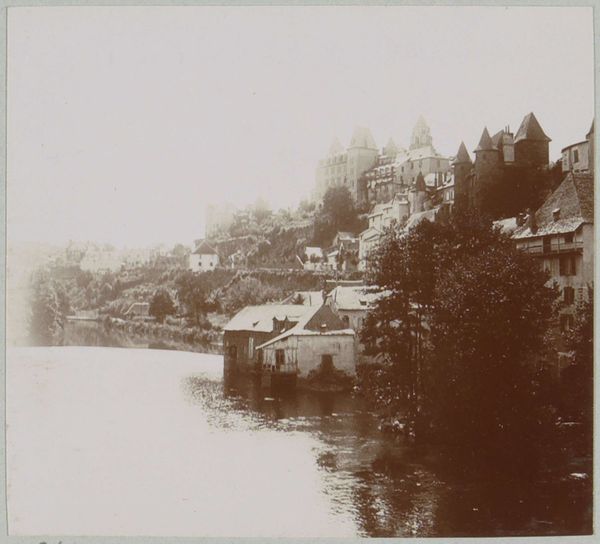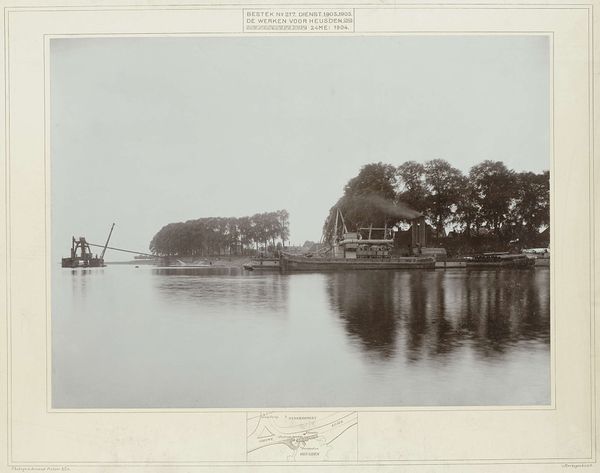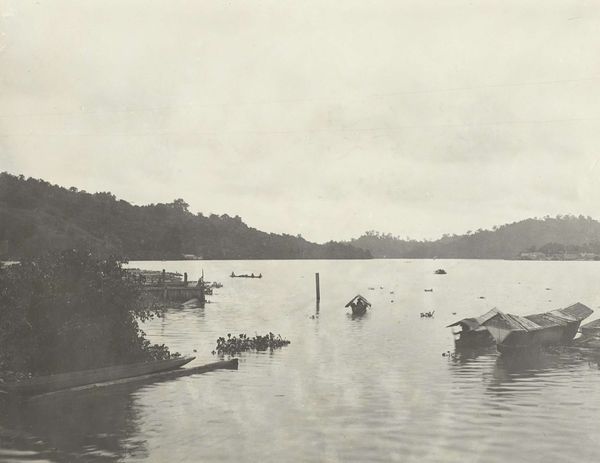
photography
#
landscape
#
photography
Dimensions: height 110 mm, width 176 mm
Copyright: Rijks Museum: Open Domain
Editor: This is "De Mäabo-berg met de zandtrein," or "The Mäabo Mountain with the Sand Train," a photograph taken by Augusta Curiel sometime between 1905 and 1910. The image has a quiet, documentary feel. There's a visible railway cutting through the hillside, and it makes me wonder about its purpose. What stands out to you in this photograph? Curator: It's fascinating to consider this image within the context of early 20th-century Suriname. The sand train and visible settlement clearly points to resource extraction, likely bauxite or gold mining, which significantly shaped the country's socio-economic structure at the time. The photograph, while seemingly a neutral landscape, can also be read as evidence of colonial economic activity. What impact do you think these industrial projects had on the indigenous communities and the environment? Editor: That’s a powerful point; I hadn’t thought about it that way initially. So, what looks like a simple scene is actually tied to broader issues of resource control and colonialism. Did Curiel intend for the image to carry this message, or was she just documenting what was there? Curator: That’s the critical question, isn't it? As a female photographer of colour during that period, Curiel’s perspective is crucial. Was she complicit in promoting the colonial narrative, or was she subversively capturing its impact? We might never know her exact intention, but looking at her work through the lens of postcolonial theory lets us consider the hidden stories and power dynamics embedded within the landscape itself. This goes beyond simple visual recording; it’s a photograph carrying significant cultural weight. Editor: This really makes me consider how seemingly straightforward images can be loaded with deeper historical and political significance. I’ll definitely approach similar artworks with more contextual curiosity now. Thanks! Curator: Absolutely. Art is rarely neutral. Examining its relationship with history is key to understanding its profound meaning.
Comments
No comments
Be the first to comment and join the conversation on the ultimate creative platform.
